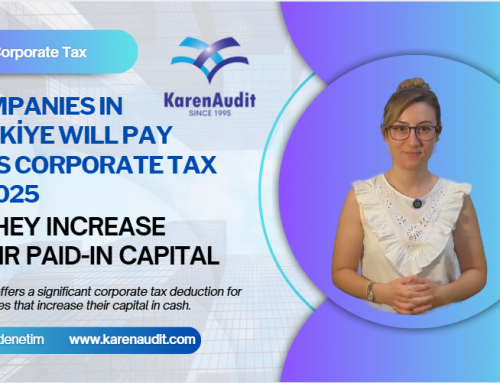April 5, 2023
Slovenian total economy generated a deficit with the rest of the world
In the 4th quarter of 2022, Slovenian total economy generated a deficit (net borrowing) with the rest of the world. It amounted to EUR 339 million or 2.2% of GDP. In the 4th quarter of 2021, Slovenian total economy generated a surplus (net lending) with the rest of the world. It amounted to EUR 161 million or 1.1% of GDP. In the 4th quarter of 2022 compared to the 4th quarter of 2021, imports of goods and services increased faster (by 14.8%) than exports of goods and services (by 11.0%). As a result, the surplus in trade with goods and services decreased (by EUR 381 million) compared to the 4th quarter of 2021 and amounted to EUR 153 million or 1.0% of GDP.
With relatively favourable growth of domestic demand in 2022 on the one hand, and economic and geopolitical tensions in international environment on the other hand, growth in exports of goods and services (22.1%) was outpaced by growth in imports of goods and services in nominal terms (29.7%) compared to 2021.
The growth of trade in services was higher on the export side (30.4%) than on the import side (24.8%) due to the easing of restrictive measures and the impact of the tourist season. The growth of import of goods was even more pronounced, at 30.6%, while the export of goods grew significantly slower (20.1%) due to worsening terms of trade. As a result, the balance of trade in goods and services decreased significantly compared to 2021 (by EUR 2,349 million) and amounted to EUR 961 million or 1.6% of GDP.
The balance of current transactions with foreign countries, which, among other things, represents the difference between savings and investments of the national economy, consequently decreased significantly compared to 2021 (by EUR 2,497 million) and turned into a deficit of EUR 425 million. This reversal reflects a slightly higher level of investment compared to saving of the total national economy in 2022. Total investment rate of the Slovenian economy (gross fixed capital formation as a share of GDP) increased by 1.6 percentage points and reached 22.0% of GDP.
The value of primary incomes, current transfers and capital transfers paid abroad was higher than the value received from abroad – by EUR 1,386 million or 2.3% of GDP.
Total economy surplus (net lending) with the rest of the world turned into a deficit (net borrowing) for the first time in ten years. It amounted to EUR 606 million or 1.0% of GDP. In 2021, the total economy surplus amounted to EUR 2,138 million or 4.1% of GDP.
Gross national income is one of the most important aggregates of non-financial sector accounts, as its amount affects the amount of contribution that Slovenia pays into the European budget. In 2022, it amounted to EUR 58,195 million, which is 13.1% more than a year earlier.
Non-financial corporations surplus significantly higher
In the 4th quarter of 2022, surplus of (public and private) non-financial corporations was the highest ever on a quarterly basis, mainly due to the recapitalisation of energy companies and higher revenues from subsidies (increased volume of aid payments to the business sector related to measures to mitigate the effect of high energy prices). Compared to the 4th quarter of 2021, it increased by EUR 1,015 million and amounted to EUR 1,383 million or 9.0% of GDP.
In the first half of 2022, non-financial corporations operated with a deficit of EUR 1,126 million (or 4.0% of GDP), while in the second half of 2022 they generated a surplus of EUR 1,852 million (or 6.0% of GDP). The deficit in the first half of the last year was mainly influenced by the decline in revenues from subsidies (as measures to mitigate the economic and social consequences of the COVID-19 epidemic declined as the epidemic wanes), the growth of investment expenditures and compensation of employees. The surplus in the second half of the last year was largely influenced by the recapitalisation of energy companies and payments to the business sector to mitigate the consequences of the increased energy prices.
According to the first annual estimate based on quarterly data, in 2022, compared to 2021, non-financial corporations increased their surplus by EUR 399 million to EUR 726 million or 1.2% of GDP.
In the 4th quarter of 2022, the profit share of non-financial corporations (gross operating surplus divided by gross value added) increased by 2.1 p.p. over the same period of last year and reached 37.7%. Gross operating surplus (the part of income left at disposal of corporations for dividend payout and (partial) financing of investments) grew significantly faster (by 18.6%) than the generated gross value added of non-financial corporations (by 11.9%). Compensation of employees (salaries and social security contributions) paid by corporations to their employees increased by 11.0%.
In the 4th quarter of 2022, non-financial corporations’ investment rate (the share of gross fixed capital formation in gross value added) went up to 22.0% and was 0.9 p.p. higher than in the 4th quarter of 2021. In the entire 2022, the investment rate increased by 0.8 p.p. compared to 2021 to 22.2%.
Financial corporations operated with a deficit
In the 4th quarter and in the entire year 2022, financial corporations generated a deficit. The deficit decreased slightly in the 4th quarter compared to the 4th quarter of 2021 (by EUR 35 million) and amounted to EUR 111 million or 0.7% of GDP. On the other hand, in the entire year 2022, compared to 2021, it increased slightly (by EUR 21 million) and reached EUR 88 million or 0.1% of GDP. The deficit was higher mainly due to increased expenditure on interests, non-life insurance claims and compensation of employees.
General government deficit significantly higher
In the 4th quarter of 2022, general government deficit amounted to EUR 1,269 million or 8.3% of GDP. It was significantly higher than the deficit in the 4th quarter of 2021, due to higher growth of expenditures than revenues. At the same time, it was also higher than in the first three quarters of 2022 in total.
The key reason for the deficit is in higher capital expenditure (due to the recapitalisation of energy companies), increased investment activities, higher social benefits expenditures, higher government final consumption expenditure and increased other transfers, mainly related to measures to mitigate the consequences of high prices of energy products and food.
In 2022, general government deficit slightly decreased compared to 2021 and amounted to EUR 2,319 million or 3.9% of GDP.
Household saving rate significantly lower
In the 4th quarter of 2022, compared to the 4th quarter of 2021, households’ gross disposable income grew by 6.2% in nominal terms or by EUR 536 million and amounted to EUR 9,242 million. In 2022, compared to 2021, it was up by 9.0% or by EUR 2,942 million and amounted to EUR 35,591 million (according to the first annual estimate based on quarterly data).
With favourable conditions on the labour market, in the face of growing uncertainty regarding energy and food prices and inflationary pressures in 2022, further growth of the average households gross disposable income was also made possible by transfers within the framework of measures to mitigate the socio-economic effect of the epidemic in the spring and high prices of energy products and food in the autumn.
In the 4th quarter of 2022, compared to the 4th quarter of 2021, household’s final consumption expenditure increased by 15.9% in nominal terms or by EUR 1,231 million. In the entire year 2022, compared to 2021, it increased nominally by 21.9% (or by EUR 5,833 million). Possible reasons for increased consumption are related to the persistent growth of gross disposable income and higher essential costs of living.
The comparison of consumption and disposable income in the 4th quarter of 2022 with the same period of 2019, before the outbreak of the epidemic, shows that household consumption increased by 31.5% and thus noticeably exceeded the growth of household disposable income. The latter increased by 26.0%.
Gross household saving rate (share of gross saving in gross disposable income) decreased significantly (by 7.9 p.p.) in the 4th quarter of 2022 compared to the 4th quarter of 2021 and amounted to only 4.0%. This is significantly less than the saved share of households gross disposable income on average in the 4th quarter of 2019 – i.e. before the outbreak of the epidemic (7.8%).
According to the first annual estimate based on quarterly data, in 2022, households on average saved 9.3% of their disposable income. For comparison, in 2021, households on average saved 18.7% of their disposable income. In the year before the outbreak of the epidemic, i.e. in 2019, households saved on average 13.4% of their disposable income.
Source: Statistical Office of the Republic of Slovenia
Legal Notice: The information in this article is intended for information purposes only. It is not intended for professional information purposes specific to a person or an institution. Every institution has different requirements because of its own circumstances even though they bear a resemblance to each other. Consequently, it is your interest to consult on an expert before taking a decision based on information stated in this article and putting into practice. Neither Karen Audit nor related person or institutions are not responsible for any damages or losses that might occur in consequence of the use of the information in this article by private or formal, real or legal person and institutions.






